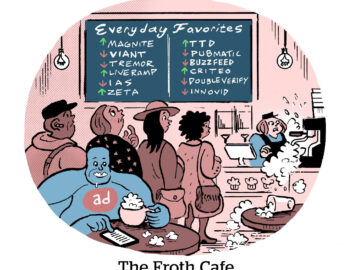

Thank you!
Just one more thing before you go...

Data Clean Rooms Are Not a Magic Bullet for Retail Media – Or Anyone Else for That Matter

By Keith Petri, CEO, lockr
Today’s online retailers are sitting on a goldmine of first-party data about their customers. They know so much about you: What you want, when you want it, what you spent on it, how often you buy it—and how you pay for it. It’s an awesome combination. Or rather, it could be.
Yes, some retailers’ incredible collection of first-party data has allowed them to become premium suppliers of ad inventory in a relatively short time. A big retailer like Amazon that also offers services like video, music, groceries and more, has deep mines of information about their customers. No traditional media publisher has ever had that kind of gold.
But Other Retailers? Not so Much.
Walmart may know that you bought a lot of toilet paper in bulk during the pandemic, but it knows very little about your life outside of its microcosm of a limited number of retail purchases. Publishers recognize this problem acutely and have addressed it over the years through audience development. The New York Times might understand some nuances surrounding your affinities – i.e. your interest in social events versus sports teams – but once again, that’s all they know.
This is why most publishers—and now retailers—enrich their data with third-party sources for audience shaping. And that’s where the problem lies.
As every publisher, retailer and brand in the world is starting to demand your email address, consumers are getting fed up with receiving the plethora of follow-up emails. Consumers don’t necessarily care if they are tracked, but they don’t want you in their inbox, especially if you’re not adding value. Which is why consumers are using email services that hide their email and protect their inbox. A retailer may have your email address but that may or may not be a machine-generated email, and it may not be the same one you use at other places you go. And that’s a real problem for all of us.
Without a Real and Persistent Email Address, Retail Media and Remarketing as a Whole Is a Mirage.
The proliferation of machine-generated, fake email addresses has hurt traditional publishers by making it impossible to reliably target and attribute impressions, and making it impossible to append off-platform activity for audience development. And once high-flying retail media ventures are facing real challenges on this front.
Today, marketers are using Unified ID 2.0, other industry efforts, and various data clean rooms (where multiple parties can put their data without ever exposing the raw data set to any other party) to build a better picture of the consumer. But if any of these solutions has machine-generated emails, they won’t have a match. They’ll have abc@privaterelay.appleid.com on Nike.com and 123@privaterelay.appleid.com on NYTimes.com or Walmart.com—and all that audience shaping information will be useless.
Garbage in, Garbage Out.
This all goes back to our responsibility as marketers and as an industry. If we don’t start respecting consumers’ inboxes and letting them control their data, they will continue to rely on machine-generated emails like Apple Hide My Email, Firefox Relay, and more. And since most anonymous and machine-generated email solutions provide users with a different email address for every site, a complex web of identity leaves publishers and retailers without legitimate targeting capabilities and lost revenue.
Consumers know we are collecting their data and they care about what is being gathered and how it’s being used. What they want is what you and I want, to get right to the good stuff, whether that’s information, a product, exclusive access, a great price, entertainment—or all of the above. What they don’t want is unsolicited spam they didn’t ask for that clogs their inbox.
Making sure we give consumers complete control, whether it’s for traditional media or retail media, is essential. Our entire industry’s future—and the entire free and ad-supported open Internet—depends on it.
View the original article in Advertising Week.

Machine-Generated Email Cost Calculator
Unlock additional revenue by integrating with Identity lockr.
Select your industry vertical.
How many registered users or newsletter subscribers do you have?
Average monthly emails sent to each subscriber per month?
What is your average email open rate?Optional
What is your average email click rate?Optional
Has lockr previously analyzed the machine-generated emails in your first-party data?
What was the percentage?
Enter your RPM (page revenue per 1,000 sessions).
What is your average monthly subscriber growth rate?
What is your anonymous web visitors monthly pageview traffic?
What is your authenticated monthly pageview traffic?
Projected Incremental Revenue
Projected Annual MGE Overhead
| MGE Fees | $0 |
| MGE Lost Email Revenue | $0 |
| MGE Advertising Leakage | $0 |
| One month of Email Jail | $0 |
| Incremental Revenue | $0.0M |
Enter your email to receive the full report.
Are you sure you want to leave?
Changes you made will not be saved.







